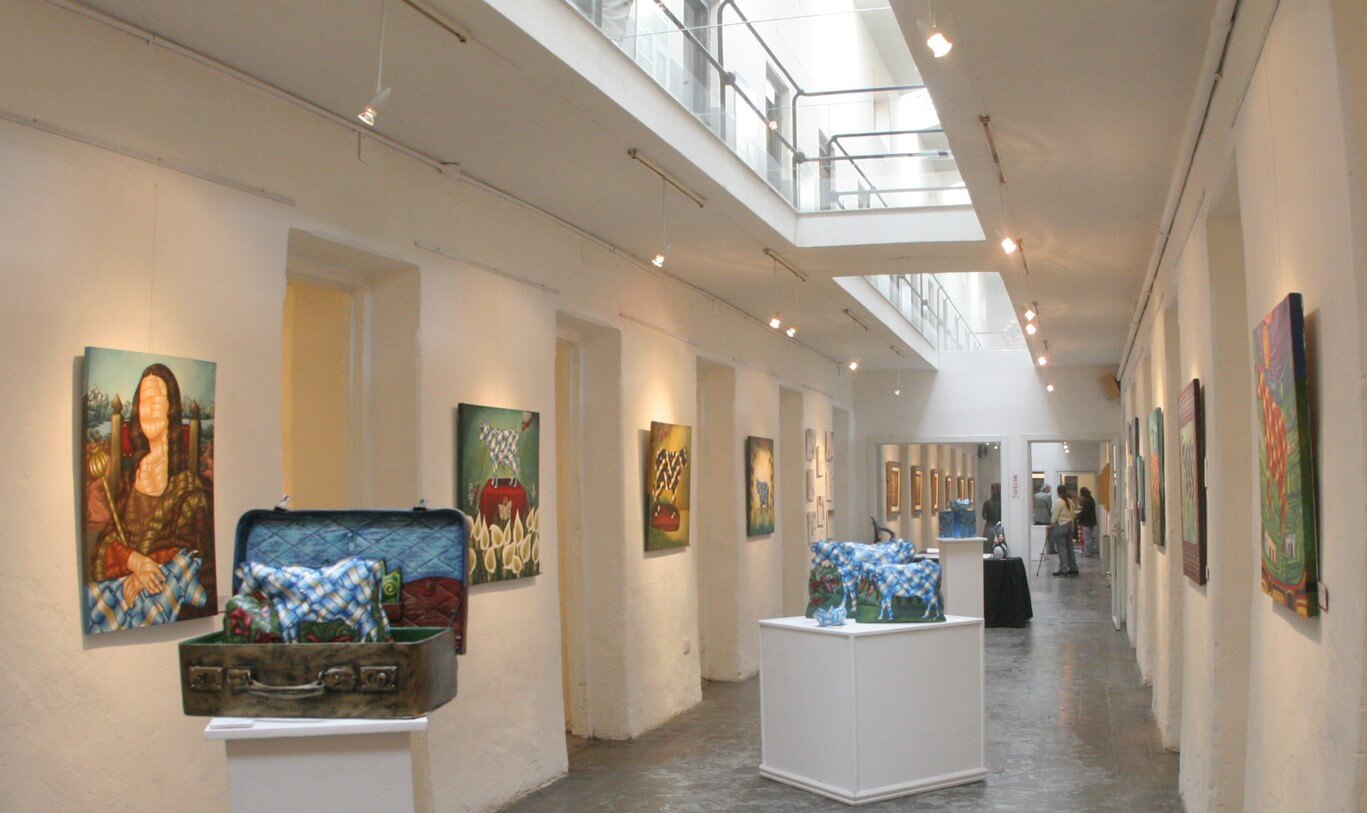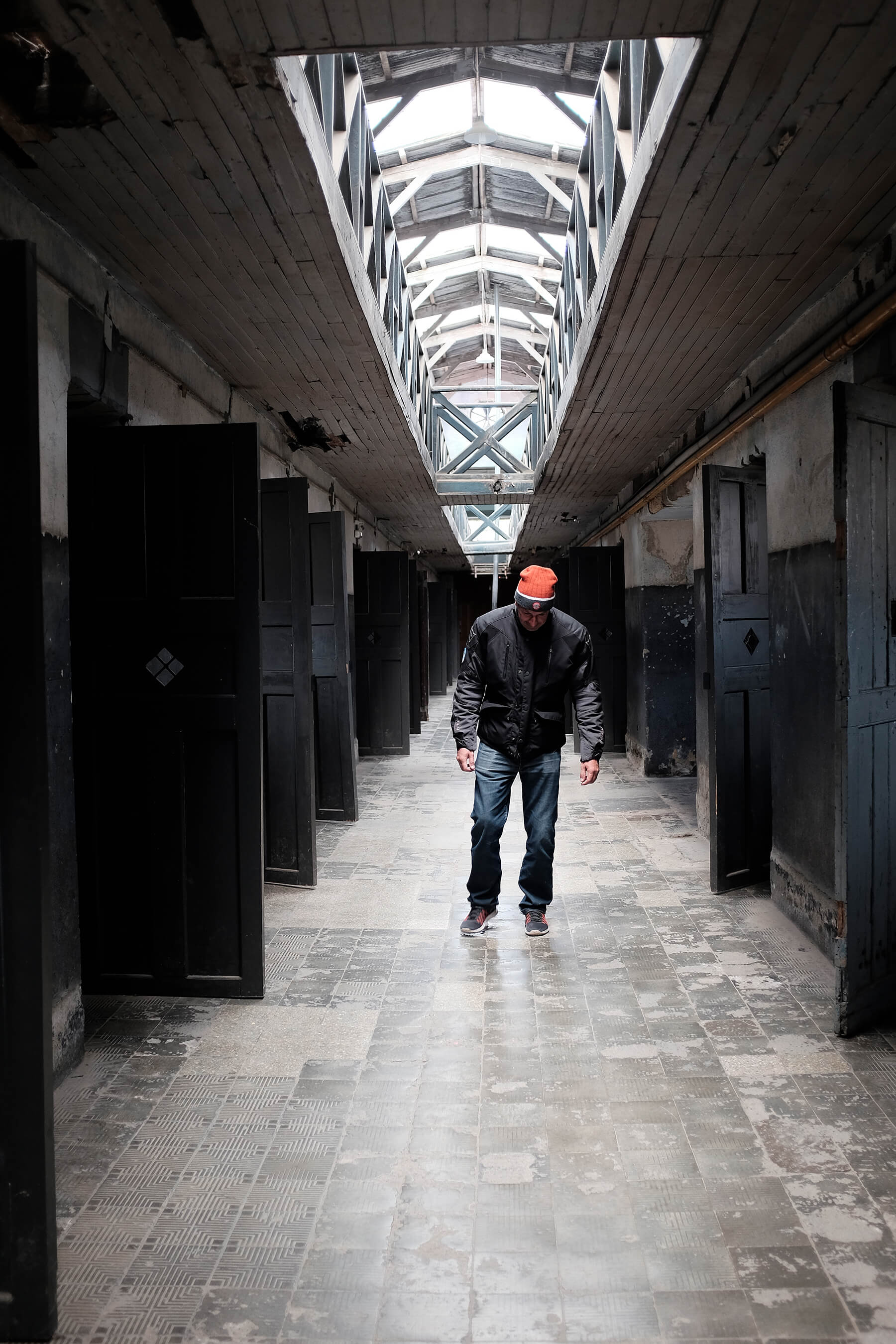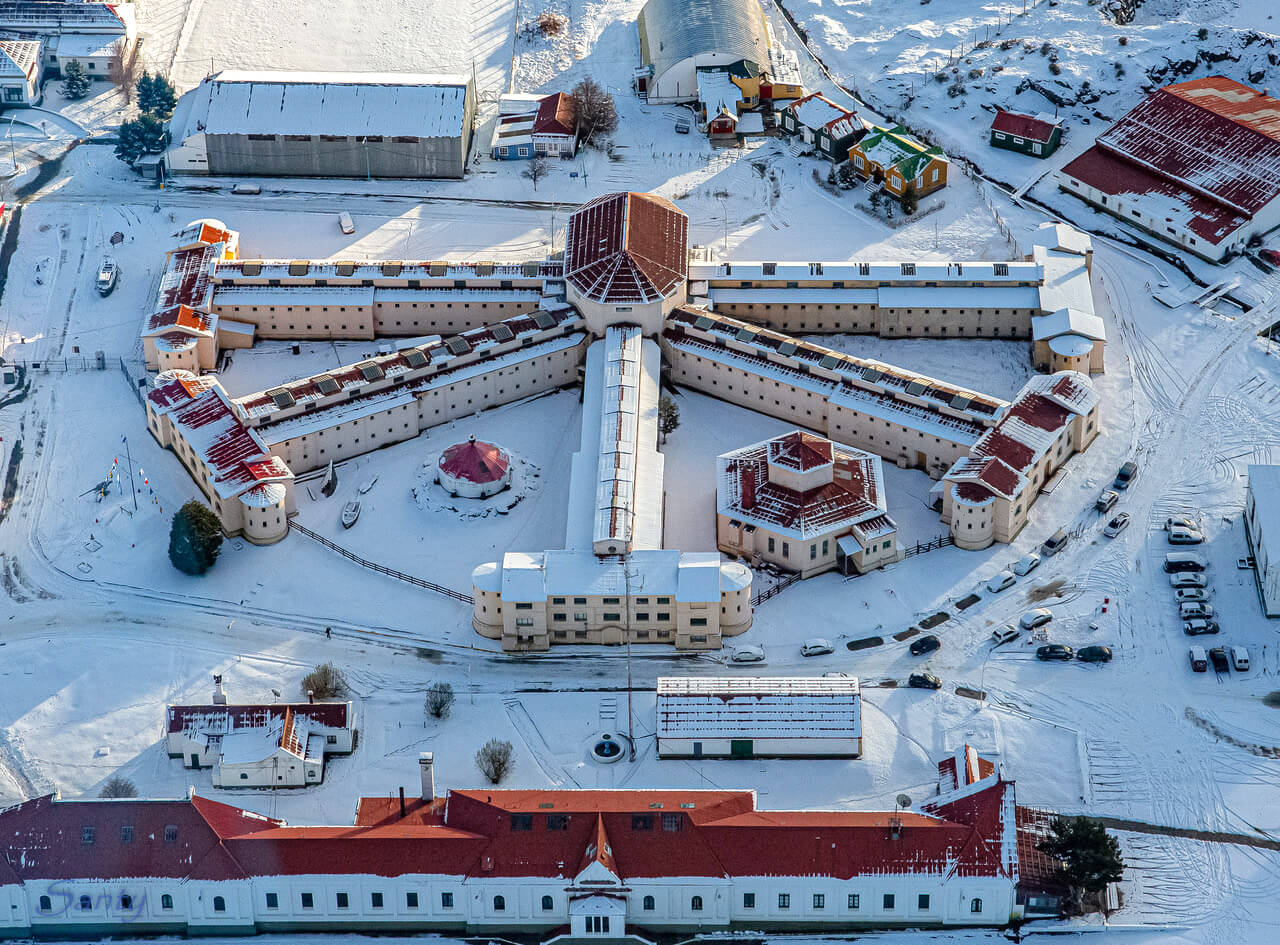In that old prison, inaugurated in 1902 and closed forty-five years later, there are five museums, an art gallery and a space declared a national historical monument. (1) The complex has become one of the greatest attractions for visitors to the southernmost city in Argentina; history and art united in a common effort. Until March 2020, the statistics indicated the sale of just under 120,000 tickets per year -43% of them foreign visitors-, and the pandemic caused the box office to collapse, as has happened in many of the museums of the world.
We propose a virtual visit, a trip through the Internet as a preview, imagining a next vacation in Tierra del Fuego, that territory that has been inhabited for thousands of years by different native peoples, captivated the navigators and explorers who advanced through spaces unknown to our planet, and that in recent decades has become a center of international tourist attraction.
The complex, located in the city of Ushuaia, brings together various attractions: the Maritime Museum, the Prison Museum, the Antarctic Museum, the Maritime Art Museum, the Naval Museum, an Art Gallery and a National Historical Monument. All of them installed in the old Prison for Recidivists founded on September 15, 1902 with a format of 5 radial pavilions -with the guard at the vertex, whose design is known as a panopticon-, similar to that of Buenos Aires, the National Penitentiary located on Las Heras Avenue, demolished in 1962 and today Las Heras Park. Its director, the Italian engineer Catello Muratgia, carried out the works; he turned the convicts into masons, carpenters, and blacksmiths, and the guards into taskmasters. With a very close quarry and the installation of a xylocarril (train on wooden rails) towed by oxen, he raised the walls almost a meter thick at the base and up to 60 centimeters at the top.
"The entire building was based on rock, escape was impossible", explains Carlos Pedro Vairo, director of the Maritime Museum and the Museum of Ushuaia Prison. It had no perimeter walls, only the frozen sea on one side and the Andes mountains on the other. Muratgia established his book of regulations and schedules, as well as set the penalties that inmates had to serve for misbehavior. This was the case until the national bodies drew up the relevant standards”.
Vairo, we continue with his word, reminds us that “in March 1947 the jail was closed by a decree of President General Juan D. Perón, and the convicts were transferred to other units. The Argentine Navy acquired the property and turned it into the Ushuaia Naval Base, and the prison building was in use until 1978 as accommodation for conscripts, storage of food, weapons, offices, workshops and last year, as a gunpowder magazine. Later it was abandoned and used as a quarry. Many bars went to the town's sewer system, the gates as livestock keepers, and so on with a lot of material. It was thought of demolishing it or giving it another destination. It was then that we formed a group of friends willing to make a Maritime Museum in one of the pavilions. The objective was to show the history of the region, mainly marine since it is an archipelago. The name of the Province reflects it: Tierra del Fuego, Antarctica, Malvinas and islands of the South Atlantic”.
That initiative evolved over the years: the first milestone was reached in 1994 with the inauguration of the Maritime Museum of Ushuaia, which had been in preparation since 1985, and already advancing from inside the old facilities, the following year the so-called Museum opened its doors of the Ushuaia Prison. The later stage matured with the initial support of the National Directorate of the Antarctic, with its director Dr. Ricardo Capdevila, and in particular General Jorge E. Leal; This is how the José María Sobral Antarctic Museum was born.
In 2006 the opening of the Museum of Marine Art of Ushuaia was formalized. In the visual arts space there is also an Art Gallery -the one that was born in 1999 in response to the concern of local artists-, and where temporary exhibitions from different countries are received between November and March; and in the rest of the year exhibitions with local artists, workshops and even schools are organized.
Finally, in 2018 the Naval Museum Comodoro Don Augusto Lasserre was inaugurated -the latest institutional achievement-, where the actions of the Argentine Navy in Patagonia and Antarctica are reflected. To give shape to this headquarters, an attached house was reconditioned, where the prison guards and checkpoints were housed, redesigned for its new function.
Conditioning all the spaces has been a never-ending task; roofs, sanitary network, electricity, gas... Much progress has been made since that first season with three hundred visitors.
With a very special guide
With the enthusiasm that drives him from his first dreams, Vairo extends himself to the attractions of each institution:
“The Maritime Museum brings together with models and various elements, the testimonies of the settlement of the place from a Yagan canoe, to the different boats used by the pioneers. Everything was done by sea, National Route 3 was precariously inaugurated in 1953”.
“The Naval Museum is located in what was a 1920 jail guards house, restored; there the naval history of Patagonia is collected. One of the most popular places to visit is the Lighthouse at the End of the World- inextricably linked to the homonymous novel by Jules Verne- whose original remains are found in a replica of it. The recovery of those material testimonies was a task that we carried out together with the Argentine Navy in 1997”.
“Let's think that here the relationship with the sea was very intense since prehistoric times; the Yagans were aquatic nomads, and by sea came explorers, gold diggers, sea lion hunters, merchants, ranchers with their cattle transported in small sailboats; the prisoners, the military and the expeditions that were sailing towards Antarctica”.
“In the Prison Museum there is a lot of history since the old jail was the economic engine of Ushuaia until 1947. We reconditioned the building leaving it as it was in use. It was the southernmost prison in the world, also known as Argentine Siberia. Among the pieces to be highlighted are the works that the prisoners did from jewelry, furniture, toys and other accessories such as boxes for sweets, jewelers, candy boxes... Among the visitors, many are interested in life behind bars, and especially, that of the most famous inmates such as Petiso Orejudo (Cayetano Santos Domingo), Simón Radowitzky, Mateo Banks and political prisoners”.
“The Antarctic Museum, for its part, was listed by Lonely Plate as having the largest collection of Antarctic ship models, from the time of the first explorers. There is also a lot of material from Argentina's early years in Antarctica, the only country that has maintained a permanent base, located in the South Orkney Islands since 1904”.
“These four museums tell the story of a very large region, in the southern portion of our continent. In the fifth venue we find the tranquility and beauty that distinguish the Art Museum exhibition, where works by Argentine creators who have painted water, be it sea, port, lagoon, rivers, etc., are presented. From Fernando Fader, Benito Lynch, Quinquela Martín, Larravide, Witjens, Pacenza... Throughout Patagonia, to the north is the Neuquén Museum of Art and to the south, our space” -Vairo says with pride.
Let's enjoy this short video, an invitation to travel:
Note:
1. Pavilion Number 1 of the former Prison was declared a National Historic Landmark in 1997 and has been preserved in its original condition ever since.
We appreciate the information provided by the researcher, director of the Maritime Museums of Ushuaia and the Presidio of Ushuaia, Carlos Pedro Vairo.



